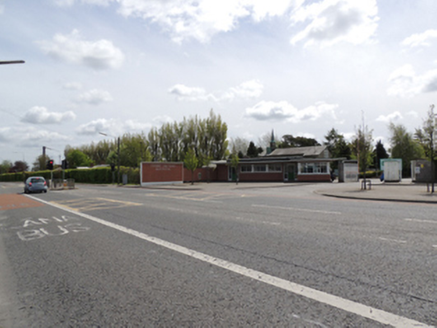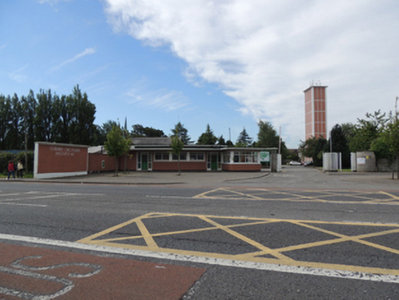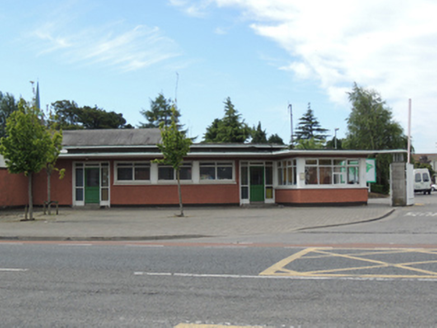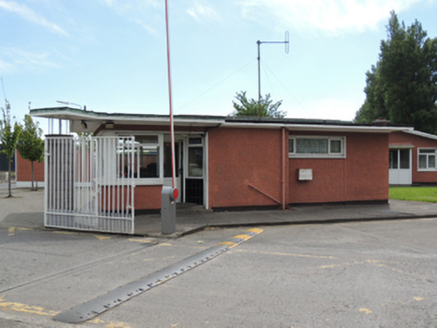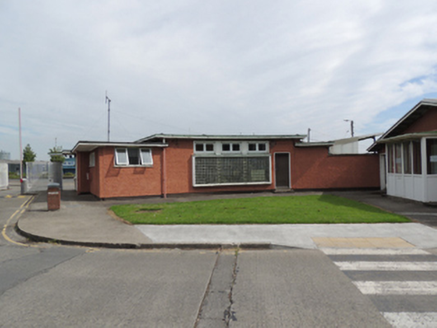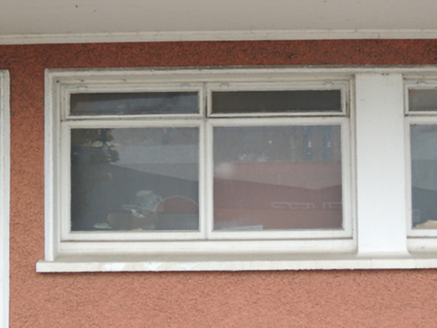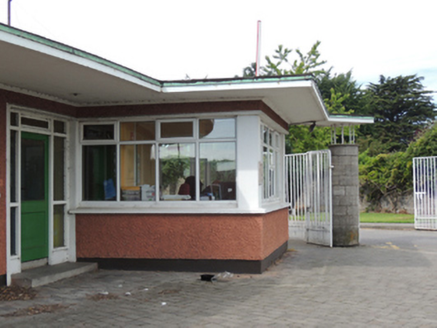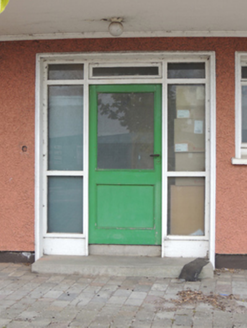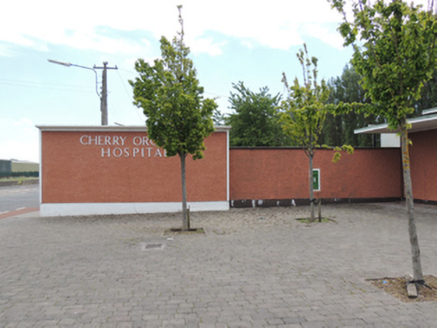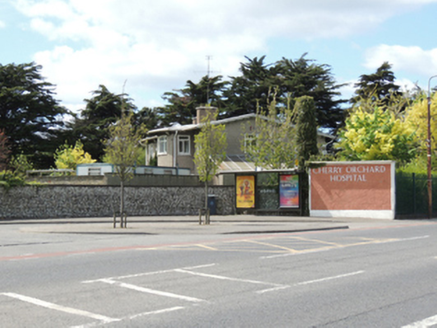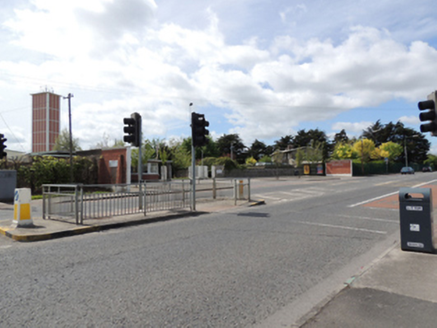Survey Data
Reg No
50080470
Rating
Regional
Categories of Special Interest
Architectural, Historical, Social
Original Use
Gate lodge
In Use As
Gate lodge
Date
1950 - 1955
Coordinates
308159, 233863
Date Recorded
14/06/2013
Date Updated
--/--/--
Description
Detached six-bay single-storey gate lodge, built 1953, having taller block to centre, flanked by lower blocks, built to a curved plan with convex front (north) elevation and concave rear (south) elevation, with projecting porter’s lodge to front elevation, screen walls to east and west, and gates to west to Cherry Orchard Hospital. Cantilevered flat roofs, extending to gate pier to west. Roughcast rendered walls with smooth rendered plinth. Square-headed window openings, strip windows to front elevation and to porter's lodge, with timber-framed and replacement uPVC windows. Glass block window to rear elevation, having raised concrete surround. Square-headed door openings, those to front elevation having half-glazed timber sheeted door, with sidelights and overlights. Circular-plan gate piers constructed with curved concrete blocks, having steel railings on plinth walls and steel gates. Roughcast rendered screen walls to east and west, having inset post box to east wall. Located to north of Cherry Orchard Hospital and south of Ballyfermot Road.
Appraisal
Cherry Orchard Hospital campus was planned to replace Cork Street Fever Hospital as the main centre for infectious diseases from 1939, and was built on the periphery of Ballyfermot in 1953. This gate lodge was one of several buildings designed as a coherent group, by Alan Hope with F.G. Hicks and G.P. Bell, including a hospital, eleven single-storey blocks of wards, an oratory, sports grounds, a swimming pool and accommodation for staff. The hospital complex is of social interest as part of the hospital building campaign spearheaded by Dr. Noël Browne as Minister for Health. The gate lodge is candidly modern in style, with the flat roof, curved walls, glass block wall, and lack of adornment typical features of mid-twentieth-century institutional architecture.
